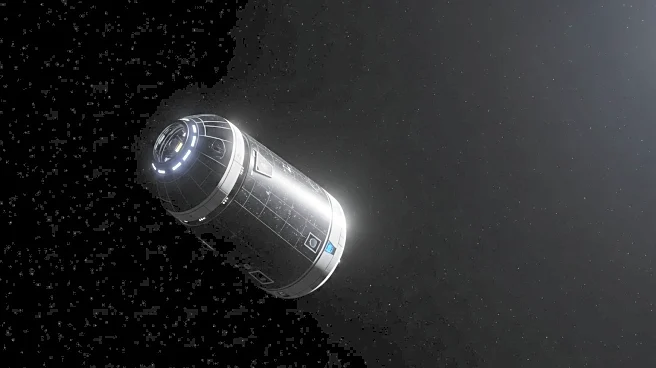What's Happening?
The Gemini VIII mission, launched on March 16, 1966, marked a significant milestone in space exploration by successfully achieving the first docking of two spacecraft in orbit. Astronauts Neil Armstrong and David Scott were aboard the Gemini VIII, which docked with the Agena target vehicle. However, the mission faced a critical emergency when the spacecraft began to spin uncontrollably due to a thruster malfunction. Armstrong's quick decision to use the re-entry thrusters to stabilize the spacecraft led to an early termination of the mission. Despite the challenges, the mission demonstrated crucial capabilities in space docking and maneuvering.
Why It's Important?
The Gemini VIII mission was pivotal in advancing the United States' space exploration capabilities, particularly in docking technology, which is essential for future missions involving space stations and lunar landings. The successful docking, despite the emergency, showcased the resilience and problem-solving skills of astronauts, setting a precedent for handling unforeseen challenges in space. This mission contributed to the development of procedures and technologies that would be vital for the Apollo program and subsequent space endeavors.
What's Next?
Following the Gemini VIII mission, NASA focused on refining docking procedures and improving spacecraft systems to prevent similar emergencies. The lessons learned from this mission informed the design and operation of future missions, including the Apollo lunar landings. Continued advancements in space technology are expected to enhance safety and efficiency in future manned missions.
Beyond the Headlines
The Gemini VIII mission highlighted the importance of astronaut training and preparedness in handling emergencies. Armstrong's decisive actions under pressure underscored the need for rigorous training and contingency planning in space missions. The incident also prompted discussions on improving communication systems to ensure constant contact with mission control.











